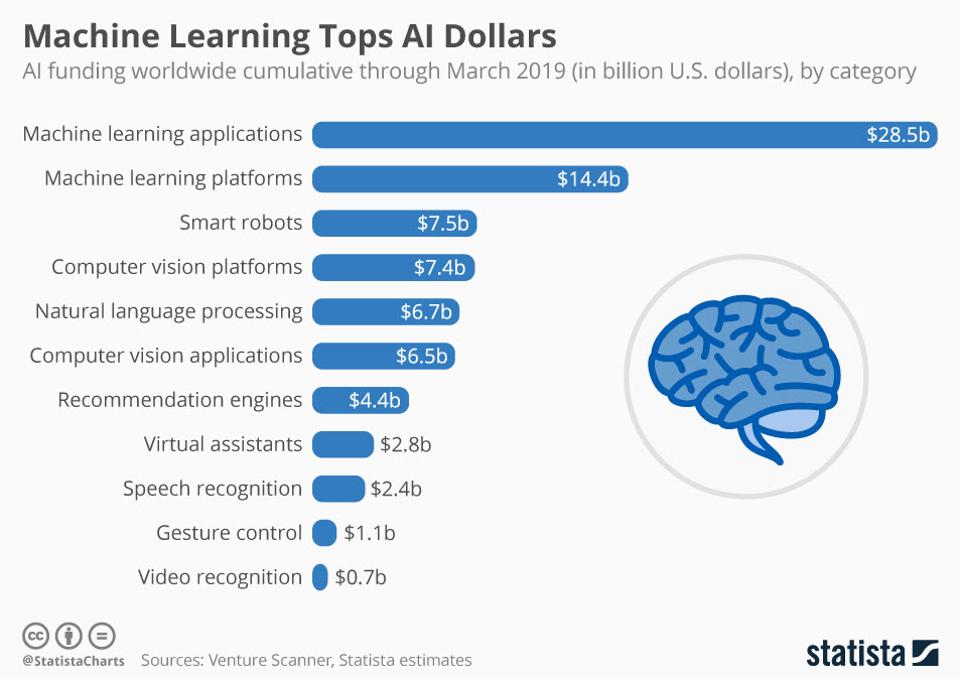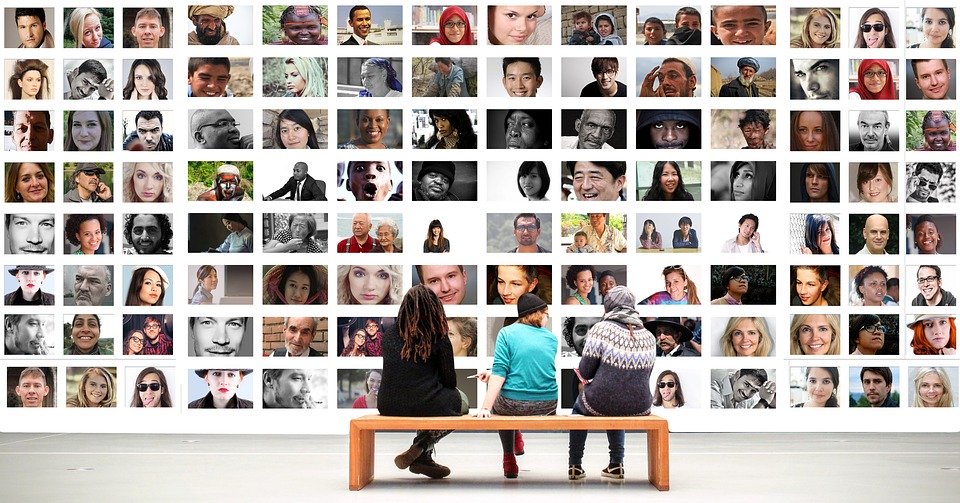The Marketing AI Techniques and Analytics Paving Way for the Future
Not long ago, Artificial Intelligence was considered as a science fiction for Marketing and companies brushed off the idea of innovating their marketing teams with AI tools. It is predicted that companies are willing to shell out as much as $57 billion for AI Marketing by 2021 to increase their leads and overall function performance.
While Starbucks’ use of Predictive Analytics upped its organic revenue to 21% (from an average of 12%), Chase Bank announced that using machine learning brought in more humanity to their marketing; able to better humanise the content concepts for increased engagement.
AI in marketing started pushing the boundaries of what companies can offer, Alibaba was quick to implement aka “FashionAI store” that uses Artificial Intelligence to serve customers smartly, taking in rafts of data as consumers enter the store and browse, leveraging that data into systems for increased company performance.
Businesses around the world are taking note.

Artificial Intelligence is and will continue to re-invent the way that businesses capture, sort, and monetise consumer data for profit. There are AI applications that offer advantages at every stage of the customer lifecycle.
The evolution of AI in marketing resulted in the transformation of companies, it’s responsible for highly effective marketing strategies, improved percentage of converting prospects, and flawless customer experience offerings.
Let’s introduce 5 of the most innovative AI technologies/techniques for marketing and highlight what makes them stand apart from the rest.
1. Audience Hyper-Personalisation
While digital advertising revolutionised marketing, its adaption came at a cost of a few significant drawbacks. 75% of online shoppers expressed their frustration towards irrelevant advertising which eventually resulted in them moving away from the website or brand.
With the magic of AI/ML, Hyper-Personalisation is automated, marketers all over the world can supply relevant advertising at scale.
It is practically impossible for any company to build a one-on-one relationship with its customers who could range from thousands to even millions. The use of AI in marketing makes that one-on-one relationship building possible and even better than traditional human interaction as it can offer extremely personalised content, products, or service to the customers after understanding their most granular personal details at a speed and degree of accuracy no human can match.

This kind of digital marketing innovation is made possible by combining what Machine Learning and Internet-of-Things (IoT) have to offer to capture as much detail, as deep as possible about the customer.
This granularity goes way beyond the purchase history or profile details. Knowing everything about a customer isn’t enough though- all of this data needs to be put into action. One must be able to customise communication with each of these customers to pump up their satisfaction and earn their loyalty.
Although ML may easily capture & cluster customer activity, some would argue we’re a long way off ML being able to surface creative concepts that ENGAGE with your hyper-personalised customer audiences.
Currently, there are no businesses that have reached a point of 1 to 1 AI crafted creative concepts for their hyper-personalised audiences- that would mean that between you and your wife, you would both receive images of different dogs for pet insurance products based on your furry friend preferences!
Here’s a snapshot of how this technology is being applied:
- Push notifications only when the customer is actively using their device
- Event-based marketing using seasonality, location, time-zone and other specific details of the customer
- Displaying product catalogue run-time by changing product options based on what they zoom in and spend more time on
- Creating custom seasonal or time of day playlists specific to customer taste
- Offering discounts and services specific when it guarantees the best chance of retention
This should be a bit of a window for you into the future because we are not far from it.
Companies that are already doing this:
Amazon – Amazon’s refined AI-based recommendations fetch 35% more conversions and its collaborative item-to-item filtering brings in 60% more conversions on-site than competitors.
Westfield Complex in London – CC cameras in the mall capture the sentiment via mood, gender, movement, age group and other details of the customers as they move through the complex to display relevant ads on their billboards serving the majority group present in the complex.
Spotify – By clustering codified sound frequencies to user’s personal attributes and identifiable information, suggesting songs and creating playlists based on like-minded listeners’ selection becomes easy and formulates the popular “discover” function on music streaming services, Spotify quickly became the leading music streaming service.
Netflix – This company accurately captures the viewer’s viewing style and suggests highly accurate content. The company has mastered its AI to such an extent that it can predict which actor would do well for what kind of script and produces such content through their originals which enjoy success rates.
Starbucks – Using AI, the company sends out only those push notifications specific to the customer and so has become one of the most extensive loyalty programs ever.
2. Targeted Timing
If you cannot figure out when the best time to reach customers is, all of your emails and notifications will join the pool of other marketing material that everyone is bombarded with each day, or worse, the wrong place and wrong time could even cost you the customer indefinitely.
This is where targeted timing comes into the picture. By choosing the perfect time to send your communication to the customer, you will dramatically increase your conversion rate whilst reducing your churn because you may have sent them something just when they were planning to look!
Inversely, if location data + social media status updates linked together conclude a customer is at a Funeral, probably not a good idea to drop a push notification reminding them of a discount. This eliminates the trial and error basis of advertising by running campaigns to the precision.
AI will also be able to recommend content that is specific to a particular season of the year or a holiday by gathering details like time-zone, location, weather, etc. Leveraging this data is a highly efficient way to increase sales by ensuring your marketing is always at the right time, in the right place.
For example:
- A push notification with offers for a nearby coffee shop when a customer is on the way to work
- Notifying customers of weekend offers in a nearby mall on weekend mornings when a customer is likely known to step out based on location history
- Email communication on a paycheck day morning when a customer is likely to purchase or sorting their finances
- Suggesting time-based content based on the time in the day (like news in the morning, a video of the favourite show at night, etc.)
- Recommending content based on the current season like winter wear for winter and beachwear for summer
- Companies that are currently using this technology:
Google – One of the most loved features of Google is its notification of traffic alert in the route to work every morning, precisely before the user leaves to work. There are plenty of others like bus timings etc. which are pushed only at the relevant hours of weekdays and not on weekends. Google collects the frequent driving paths of the user, timing, and other behavioural patterns to make the best use of notifications at targeted timing. In the long run, users look forward to these alerts and obtain significant value from them.
YouTube – Based on your watch preference for a specific time, YouTube shows you recommendation relevant to your mood. For example, if a viewer watches a recipe every night, it recommends several recipe videos. If the same viewer watches videos on sports every weekend, YouTube recommends just that. YouTube is known for its aggressively adaptive algorithm that can change to match user preferences as they change daily, hourly and in some cases, in real time.
As you can see, the app uses multiple-choice questions and mapped out stages to keep users interested. You can also set goals, pick up badges, and earn points to buy power-ups along the way. Like most other gamified apps, Duolingo has a key focus on bringing friends together to compete against each other and against other aspiring language learners for achievement and bragging rights.
3. Context-Based Personalised Advertising
There are several conspiracy theories out there on how Facebook and Google are secretly listening to your conversations because you are being served advertisements of products or services that you had in mind.
Make no mistake, these companies are certainly listening but instantly contextual ads aren’t done through the user’s microphones. Their AI collects thousands of data points from each customer – like search history, social interactions, online interactions, cookies, and more, all of which work together to immediately serve advertisements that are very contextually relevant.

By targeting those who have the highest likelihood of engaging, companies can serve high-quality advertisements with impressive customer reach and conversion rates. With this level of contextual dynamic ad serving, customers see what they really want to see as an advertisement and not what the companies show them randomly recognised as “noise”.
So next time you’re talking to your significant other about getting a good night of sleep with some new bedding accessories – keep an eye out for the memory foam pillow ads to follow 😉
Examples:
- If you liked a post on some e-commerce group, you will be served ads for that e-commerce website
- If you have been donating money online for charities or national emergencies, you will be served up more charitable opportunities
- If you added a product to your cart but did not purchase it, you will be retargeted with an advertisement on that specific product and similar ones from that website
- If you post pictures on Halloween or any specific holiday, related seasonal ads and burst campaigns will be displayed
How are Google and Facebook using this technology?
Google – When we browse on any of Google’s products like Chrome, YouTube site, Apps from Play Store, or the Search Engine itself, the company displays advertisements that are contextually relevant and almost appear like the results that we wanted
Facebook – Based on the social interactions, Facebook serves ads very relevant to their users thereby milking the best that advertising has to offer. Together combined, Google and Facebook are all set to reach a $200 Billion revenue for their advertising alone!
4. Dynamic Pricing
Dynamic pricing brought along a major disruption to the marketing world by pricing a product or service that worked for both company and customer based on individual variables.
- Pricing an airline ticket based on seasonal demand or competitor’s price
- Surge pricing based on peak hours of product/service’s demand
- Location-specific pricing for the complexity of offerings
- Time-based pricing based on the traffic for the products/services
- Increasing product’s rate when there is a spike in its demand

Companies that are currently using this technology:
Booking.com – Based on the season of booking (like holidays, travel seasons), number of flights running for that route, competitor’s pricing, the device used, demands and other data points, websites like Booking.com, American Airlines, etc., made the best use of dynamic pricing
Uber – By pricing a ride based on the traffic in the scheduled route or the difficulty in reaching the destination, Uber successfully gained both drivers’ as well as customers’ loyalty and trust
5. Curation of AI-Generated Content
According to a recent survey by the New York Times, you have only 8 seconds to grab the attention of your visitor. 75% of visitors would leave if you cannot offer them personalised content that is tailor-made for them.

While AI has been generating the content, which has been received with an overwhelmingly positive response from the readers, AI is now also capable of curating this content entirely to build the most effective flow and creative concept.
AI understands the type of content customers are interested in and captures the details of where they stop reading or for how long they spend time reading a marketing email. After weighing in several data points gathered from across the customers, AI curates the content (in some cases, bringing elements of a dynamic creative together) so that it is visually appealing, engaging, and most importantly leads to action from the customer.
AI-Generated content also uses the best possible SEO keywords naturally to improve online visibility and search-ability of the content through knowing what is currently being searched for, what is being competed for and what is not to position appropriately.
Examples of services:
- If the customer exhibits intent to act straight away, AI won’t hesitate to display action buttons like buy, pay, etc. right after the brief introduction without the customer having to scroll
- Depending on from which device the customer likes to access emails or messages, AI makes content that is visually appealing to that particular device
- If a customer is more interested in graphs, or pictorial representation of the content, AI generates more of that content by re-purposing text to table
- If the customer likes it brief, content is brief but for detail-lovers, the program can create bring in detailed descriptions or bullet points into the next scrolls of the landing page
- A blog with a set style of articles based on audience retention and interest
- Listing out topics and drafts to be written and their order based on demand, interest, and relevancy
Companies that are currently using this technology:
Chase Bank – Chase Bank was one of the first banking services to adopt Content Creation through AI and later announced that their customers were “extremely satisfied” with the new content which sounded even more human than their humans
HubSpot Content Strategy – This tool offers specific topics for writers and their metrics such as relevancy, monthly search volume, domain strength, etc., for the writers who can make the best use of it to create articles that work alongside their SEO strategies.
45% of our current global population and 90.4% of our millennials use social media.
In conclusion…
Over 90% of these consumers surveyed are willing to share their behavioural data for additional benefits, offers, and recommendations that will make their shopping experience easier and more seamless.
If you want to serve meaningful ads that actually work to the right person at the right time, context-based personalised advertising is very quickly becoming the go-to for businesses regardless of industry and size.
With fluctuating demands in products and services, it also becomes necessary to tailor pricing in real-time based on the patterns and trends identified in data – therefore maximising profit. For companies that rely significantly on content marketing, AI can programmatically recommend content concepts that ensure the most valuable, engaging pieces of content based on data and facts go to market.
We are in a new age of digital marketing and that is being led by the brilliance of behavioural data innovations across social media and web combined with advancements in data modelling.
The combination of AI and data/ML is the perfect match that future-proofs customer marketing.
Marketing AI technologies eliminate the assumptions and guess-work by bringing in real-time facts that are proven to improve your brand value as you enjoy a more loyal customer base by becoming future.
